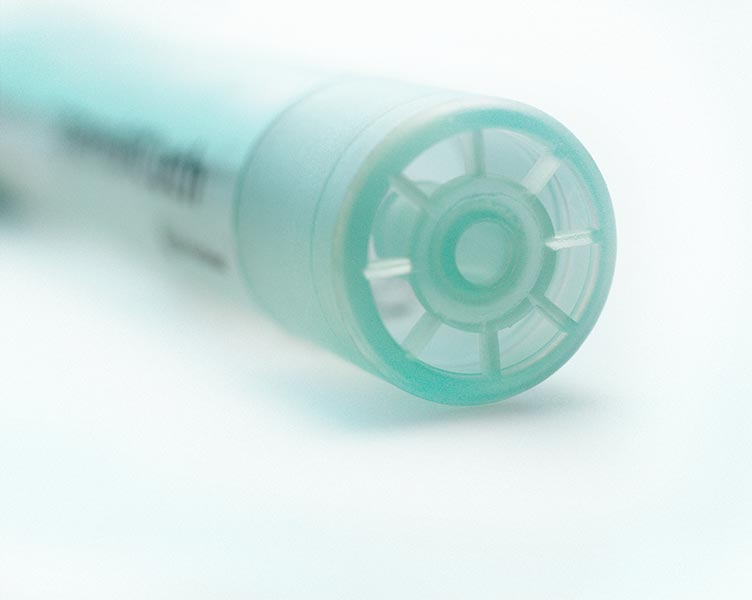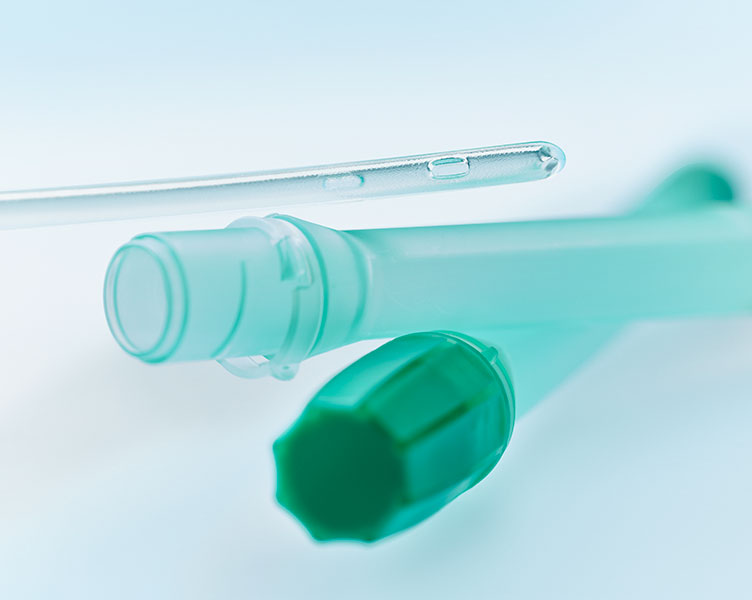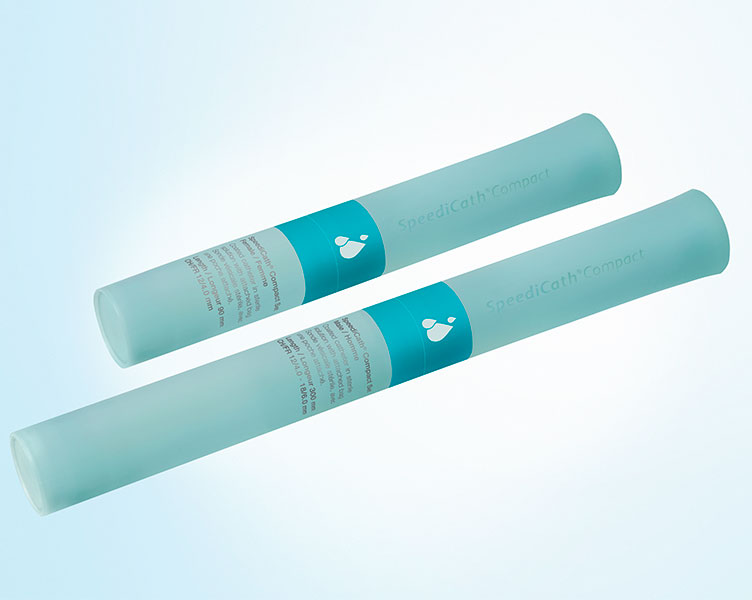“Your Right to Choose”
It is your right (along with the advice and support of your healthcare provider) to choose the intermittent catheter that best meets your healthcare and lifestyle needs. To ensure you get the product you desire, it is important for you to understand your insurance policy and to purchase your supplies from a medical supplier that works with your insurance provider and accepts assignment for the product you and your healthcare provider choose.
FAQs and common terms (allowable units, allowable dollars, co-insurance, co-payment
GLOSSARY/GENERAL TERMS:
Maximum Allowed (allowable) Amount: There are two considerations for this term.
- Maximum allowed (allowable) DOLLAR amount - indicates the maximum payment that the insurance provider will allow to be reimbursed for the specific medical item purchased.
- Maximum allowed (allowable) UNIT amount - indicates the maximum number of “units” or “eaches” the insurance provider will cover….and pay for each month.
Accepting Assignment: Indicates that the medical supplier will accept the maximum dollar amount allowed by the insurance provider as full payment for the purchased product. The individual may be responsible for a co-payment of that ALLOWED amount unless a secondary insurer covers that portion.
A Medicare example could be:
- Patient purchases a straight tip intermittent catheter – suggested retail = $3.50 each
- Medicare maximum allowed dollar amount for a straight tip intermittent catheter = $2.00
- Medicare is usually a split payment = 80% insurance pay & 20% patient co-pay (of allowed $ amount)
- Therefore, Medicare would pay 80% of the allowed dollar amount of $2.00/each = $1.60/per unit
- The patient would be responsible for 20% of that allowed dollar amount = $0.40/per unit
- When the medical supplier accepts assignment, they cannot bill the patient the difference between the Maximum allowed dollar amount & the suggested retail dollar amount
NOT Accepting Assignment: Indicates that the medical supplier will sell the medical product to you and you will be responsible for paying for that product at time of purchase. The medical supplier will then complete your insurance claim and it will be submitted to your insurance provider. However, the difference to your out-of pocket expense may be quite significant.
A Medicare example could be:
- Patient purchases a straight tip intermittent catheter – suggested retail = $3.50 each
- Patient pays “full suggested retail price” for product at time of purchase = $3.50 each
- Medicare maximum allowed dollar amount for a straight tip intermittent catheter = $2.00
- Medicare is usually a split payment = 80% insurance pay & 20% patient co-pay (of allowed $ amount)
- Therefore, Medicare would pay 80% of the allowed dollar amount of $2.00/each = $1.60/per unit
- In this scenario, Medicare would send their payment (the 80% or $1.60) for each intermittent catheter directly to the patient…BECAUSE:
- The patient paid the medical supplier the full suggested retail price for the intermittent catheters…at time of purchase.
- Therefore the medical supplier has already been paid in full
- Also in this case…there would be no co-payment required from the patient to the medical supplier….because it was included as part of the full suggested retail payment that was made at time of purchase
This example shows that there is a significant difference in the patient’s out-of-pocket expense. Let’s look at the example:
- Patient paid full suggested retail for each intermittent catheter = $3.50
- Insurance (Medicare is the example) allows only $2.00 for each intermittent catheter
- Medicare’s responsibility of that $2.00 is 80% = $1.60
- $3.50 (suggested retail) –$1.60 (Medicare payment) = $1.90 (patient payment per unit)
- In this example the patient’s out-of-pocket expense would be $1.90 for each intermittent catheter…which is significantly higher than the $0.40/per unit example that is shown in the “Accepting Assignment” scenario.
Working with a medical supplier that “Accepts Assignment” vs. one that “Does Not Accept Assignment” can have a significant impact on the expenses a patient may/may not incur when purchasing medical supplies.
HCPCS Codes (Healthcare Common Procedure Coding System) Codes: These are the billing codes used on insurance claims to identify the medical product that was purchased. The insurance provider will use these codes along with supporting documentation from the physician to validate that the product is medically necessary based on the patient’s diagnosis. There are only three HCPCS Codes for intermittent catheters:
- A4351 – Straight tip Intermittent catheter (with or without coating)
- A4352 – Coudé tip intermittent catheter (with or without coating)
- A4353 – A “no-touch” or “sterile kit” or “closed system” intermittent catheter (with or without accessories)
NOTE: The term “with or without coating” indicates the intermittent catheter may or may not have a hydrophilic coating, Teflon coating, silicone coating or silicone elastomer coating. The term “with or without accessories” indicates that gloves, drape & wipes may or may not be included
Coverage types:
Based on your insurance policy (whether a public or private program), coverage of medical supplies can range from covering all, some or none of your medical supplies, or a combination of these offerings. Here are examples of some Public and Private providers:
- Public Insurance –Medicare, Medicaid, State, Government, National healthcare providers. The coverage is pretty similar at national level and may vary slightly by state.
- Private Insurance –Blue Cross Blue Shield, Aetna, Met Life, United Healthcare, etc. The coverage of these private insurance providers are determined by the policies contracted with the employers or group organisations.
Remember, it is important for you to review your specific coverage guidelines with your insurance provider.
Example of coverage type:
Coverage criteria: The criteria for insurance providers to cover (pay for) intermittent catheters is fairly standard. The medical record usually indicates the term “permanent urinary incontinence” or “permanent urinary retention.” ALL intermittent catheters fall under one of the three HCPCS Codes. Some insurance providers may only require a prescription from the healthcare provider to cover intermittent catheters, while others may require more documentation as criteria to meet the medical necessity of using these products. Basic criteria include:
- A4351 – Straight tip intermittent catheter (with or without coating) CRITERIA: Permanent urinary incontinence or permanent urinary retention and other progress notes indicating the medical necessity for use of intermittent catheters
- A4352 – Coudé tip intermittent catheter (with or without coating) CRITERIA: Permanent urinary incontinence or permanent urinary retention, progress notes indicating medical necessity of intermittent catheterisation, medical justification of coudé tip catheter such as documentation that the patient cannot effectively or successfully use, or has difficulty advancing, a straight tip intermittent catheter
- A4353 – No-touch, Sterile Kit or closed system intermittent catheter. CRITERIA: May vary depending on insurance payer. Examples might include one or more of the following:
- Patient has had distinct, recurrent urinary tract infections, while on a program of sterile intermittent catheterisation with A4351 or A4352, twice within the 12 months prior to the initiation of no-touch, closed systems or sterile intermittent catheter kits
- Patient resides in a nursing home
- Patient is immunosuppressed (i.e.: on a regimen of immunosuppressive drugs post-transplant, on cancer chemotherapy, has AIDS, has drug-induced state such as chronic oral corticosteroid use)
- Patient is a spinal cord injured female, pregnant and has neurogenic bladder (for duration of pregnancy only)
- Patient has radiologically documented vesico-ureteral reflux while on a program of intermittent catheterisation
Links to policies:
- Center for Medicare and Medicaid Services - http://www.cms.gov/
- Medicare Pricing, Data Analysis and Coding - https://www.dmepdac.com/
- About Health (offers various sites for patient empowerment related to medical care- http://patients.about.com/od/costsconsumerism/a/hcpcscodes.htm
How many catheters are allowed per month/day? The number of intermittent catheters covered by insurance per month is dictated by the particular policy of the holder. Most (but not all) insurance providers allow one new intermittent catheter per catheterisation episode, up to a maximum amount of 200 units per month. An example would be:
- Patient performs intermittent catheterisation 6 x per day
- Based on a 30 day month, the patient’s insurance would allow 180 intermittent catheters per month.
- Although 200 may be the maximum allowed, in this case, the patient (based on the catheterisation regimen prescribed by the physician) only uses, and needs, 180
Accessories – what is allowed?
- A4332 – lubricant for uncoated intermittent catheters (one individual sterile packet per intermittent catheter.) This item would be an additional purchase for individuals who are not using a hydrophilic coated intermittent catheter.
- A4331 – 24” extension tube (attaches to handle-end of intermittent catheter allowing the individual to reach the toilet from a wheelchair position or other position preventing easy access to toilet)
Other information
Will I have an out-of-pocket payment? This depends on individual policy. It is important to familiarise yourself with your insurance policy and how it covers your medical supplies.
How can I order and receive my catheters?
- Local medical supplier (may or may not accept assignment)
- Those with storefronts allow the individual to pick up product and not have to wait for delivery
- Those that do not have storefronts will ship
- Regional/National medical supplier (may or may not accept assignment)
- Will ship
Ongoing prescription
Most prescriptions are valid for 12 months. This ensures that the patient seeks proper follow-up with his/her healthcare provider to ensure health is on track and changes are made if/when necessary. If your medical needs or condition changes, you may require a new prescription.
Although your prescription may be valid for one year, pharmacy guidelines require that it be written based on “one month” usage. It is common, however, for many medical suppliers to fill and ship a 3 month inventory of product.
If you ever experience problems in getting Coloplast intermittent catheters covered, please contact us directly at 1-855-863-3907. We will do everything possible to help you address the issue.
Disclaimer: The information in this document is informational only, general in nature, and does not cover all payers’ rules or policies. This document represents no promise or guarantee by Coloplast Corp. regarding coverage or payment for products or procedures.
Coloplast Corp. provides this information for your convenience only and makes no warranties or guarantees, expressed or implied, concerning the accuracy or appropriateness for any particular use of the information provided. It is intended for informational purposes for FDA approved uses only and is not intended as a recommendation regarding clinical practice. It is always the provider’s responsibility to determine coverage and submit appropriate codes, modifiers, and charges for the services that were rendered. It is neither legal advice nor advice about how to code, complete or submit any particular claim for payment or to increase or maximise reimbursement by any third party payer. Existence of or assignment to a particular code with or without an associated payment amount does not guarantee coverage or payment.
Contact your Medicare contractor or other payer for interpretation of coverage, coding, and payment policies since reimbursement policy can vary widely and frequently changes, often without notice.
Healthcare Common Procedure Coding System (HCPCS) Level II codes are maintained by the Centers for Medicare and Medicaid Services. More information can be found at: http://www.cms.hhs.gov/MedHCPCSGenInfo/01_Overview.asp#TopOfPage
Medicare 2015 national average allowed payment amount. Includes 20% patient copayment amount. These may not include potential payment reduction from US Government Sequestration. Appearance of a code with or without a payment amount does not guarantee coverage or payment for any claim. Payment is subject to beneficiary meeting any coverage criteria, deductibles, or other requirements. Source: Medicare DMEPOS Fee Schedule 2015. http://cms.gov/Medicare/Medicare-Fee-for-Service-Payment/DMEPOSFeeSched/index.html



